Signaling logic of activity-triggered dendritic protein synthesis: an mTOR gate but not a feedback switch
- PMID: 19242559
- PMCID: PMC2647780
- DOI: 10.1371/journal.pcbi.1000287
Signaling logic of activity-triggered dendritic protein synthesis: an mTOR gate but not a feedback switch
Abstract
Changes in synaptic efficacy are believed to form the cellular basis for memory. Protein synthesis in dendrites is needed to consolidate long-term synaptic changes. Many signals converge to regulate dendritic protein synthesis, including synaptic and cellular activity, and growth factors. The coordination of these multiple inputs is especially intriguing because the synthetic and control pathways themselves are among the synthesized proteins. We have modeled this system to study its molecular logic and to understand how runaway feedback is avoided. We show that growth factors such as brain-derived neurotrophic factor (BDNF) gate activity-triggered protein synthesis via mammalian target of rapamycin (mTOR). We also show that bistability is unlikely to arise from the major protein synthesis pathways in our model, even though these include several positive feedback loops. We propose that these gating and stability properties may serve to suppress runaway activation of the pathway, while preserving the key role of responsiveness to multiple sources of input.
Conflict of interest statement
The authors have declared that no competing interests exist.
Figures
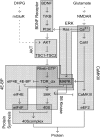
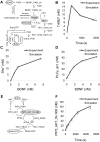
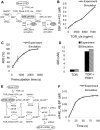

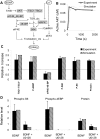
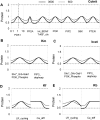

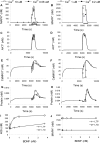

Similar articles
-
Brain-derived neurotrophic factor induces mammalian target of rapamycin-dependent local activation of translation machinery and protein synthesis in neuronal dendrites.J Neurosci. 2004 Nov 3;24(44):9760-9. doi: 10.1523/JNEUROSCI.1427-04.2004. J Neurosci. 2004. PMID: 15525761 Free PMC article.
-
Roles of glutamate receptors and the mammalian target of rapamycin (mTOR) signaling pathway in activity-dependent dendritic protein synthesis in hippocampal neurons.J Biol Chem. 2006 Jul 7;281(27):18802-15. doi: 10.1074/jbc.M512524200. Epub 2006 May 1. J Biol Chem. 2006. PMID: 16651266
-
Mitogen-activated protein kinase upregulates the dendritic translation machinery in long-term potentiation by controlling the mammalian target of rapamycin pathway.J Neurosci. 2007 May 30;27(22):5885-94. doi: 10.1523/JNEUROSCI.4548-06.2007. J Neurosci. 2007. PMID: 17537959 Free PMC article.
-
BDNF mechanisms in late LTP formation: A synthesis and breakdown.Neuropharmacology. 2014 Jan;76 Pt C:664-76. doi: 10.1016/j.neuropharm.2013.06.024. Epub 2013 Jul 2. Neuropharmacology. 2014. PMID: 23831365 Review.
-
BDNF-induced local protein synthesis and synaptic plasticity.Neuropharmacology. 2014 Jan;76 Pt C:639-56. doi: 10.1016/j.neuropharm.2013.04.005. Epub 2013 Apr 16. Neuropharmacology. 2014. PMID: 23602987 Review.
Cited by
-
HillTau: A fast, compact abstraction for model reduction in biochemical signaling networks.PLoS Comput Biol. 2021 Nov 29;17(11):e1009621. doi: 10.1371/journal.pcbi.1009621. eCollection 2021 Nov. PLoS Comput Biol. 2021. PMID: 34843454 Free PMC article.
-
Understanding the mTOR signaling pathway via mathematical modeling.Wiley Interdiscip Rev Syst Biol Med. 2017 Jul;9(4):e1379. doi: 10.1002/wsbm.1379. Epub 2017 Feb 10. Wiley Interdiscip Rev Syst Biol Med. 2017. PMID: 28186392 Free PMC article. Review.
-
PIP3-Phldb2 is crucial for LTP regulating synaptic NMDA and AMPA receptor density and PSD95 turnover.Sci Rep. 2019 Mar 13;9(1):4305. doi: 10.1038/s41598-019-40838-6. Sci Rep. 2019. PMID: 30867511 Free PMC article.
-
BDNF activates mTOR to regulate GluR1 expression required for memory formation.PLoS One. 2009 Jun 23;4(6):e6007. doi: 10.1371/journal.pone.0006007. PLoS One. 2009. PMID: 19547753 Free PMC article.
-
In SilicoModel-driven Assessment of the Effects of Brain-derived Neurotrophic Factor Deficiency on Glutamate and Gamma-Aminobutyric Acid: Implications for Understanding Schizophrenia Pathophysiology.Clin Psychopharmacol Neurosci. 2017 May 31;15(2):115-125. doi: 10.9758/cpn.2017.15.2.115. Clin Psychopharmacol Neurosci. 2017. PMID: 28449558 Free PMC article.
References
-
- Sutton MA, Schuman EM. Dendritic protein synthesis, synaptic plasticity, and memory. Cell. 2006;127:49–58. - PubMed
-
- Bramham CR, Wells DG. Dendritic mRNA: transport, translation and function. Nat Rev Neurosci. 2007;8:776–789. - PubMed
-
- Klann E, Antion MD, Banko JL, Hou L. Synaptic plasticity and translation initiation. Learn Mem. 2004;11:365–372. - PubMed
Publication types
MeSH terms
Substances
LinkOut - more resources
Full Text Sources
Other Literature Sources
Miscellaneous

